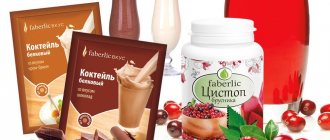Often this cocktail consists of a mixture of mussels, shrimp, octopus and squid. These are all seafood, hence the name. This is a wonderful ingredient for many dishes, mixing with different foods and vegetables, you can come up with countless recipes. But do not underestimate a seafood cocktail; it is also healthy and tasty as an independent dish, even without additives.
Benefits of a seafood cocktail
A seafood cocktail not only has good taste, but also numerous valuable properties. It supplies the body with important vitamins and microelements, helps improve overall well-being and prevent the development of illnesses. With regular consumption of assorted food:
- normalizes blood pressure;
- lowers blood sugar levels and prevents the development of diabetes;
- improves the functioning of the nervous system and helps fight stress;
- strengthens memory and regulates sleep;
- prevents cancer;
- reduces the risk of developing atherosclerosis;
- improves the functioning of the stomach and intestines.
Eating a seafood cocktail is useful for preventing vitamin deficiency. If included in your diet on a regular basis, it will help build and maintain healthy muscle mass.
Attention! A seafood cocktail is very useful for pregnant women, but before consuming it you need to make sure there are no allergies.
Is sea cocktail in oil healthy?
Sea cocktail is available in stores in several varieties, including oil. The seafood in its composition retains all its beneficial properties and good taste, and does not lose vitamins and microelements, as often happens when processed by blast freezing.
We recommend reading: White fireweed honey: composition and use, beneficial properties
A cocktail in oil can have a particularly good effect on the digestive and metabolic systems. Canned seafood accelerates metabolic processes, prevents constipation and improves liver and intestinal function.
But at the same time, you need to approach the consumption of assorted foods with caution if you have chronic diseases. For pancreatitis, gallbladder ailments and exacerbation of gastritis and ulcers, it is better to avoid the cocktail, as it can provoke a worsening of the condition.
When purchasing assorted seafood in oil, it is especially important to check the expiration dates of the product and the tightness of the packaging.
Is a sea cocktail in brine good for you?
Not only oil and blast freezing allow you to keep seafood fresh for a long time, but also immersing squid, shrimp and mussels in brine. The liquid serves as a good preservative, providing the cocktail with freshness for several months, while the vitamins and microelements in the composition are not destroyed. Seafood in brine can be eaten pure or used in salads and appetizers.
You should avoid the cocktail only if you have gastritis with high acidity, ulcers, pancreatitis and gout. It is not advisable to buy assorted foods if you have chronic inflammatory kidney diseases. The brine in this case will have a negative effect and provoke an exacerbation. It can also lead to edema and deterioration of the cardiovascular system.
Advice! Thorough rinsing of shrimp, mussels, squid and other ingredients in cold water before consumption helps reduce the potential harm from seafood in brine.
What to eat with a seafood cocktail?
1. The best addition to it is white wine. Still mineral water and citrus juice are also welcome. Oysters are served with champagne or light beer.
2. The best side dish for a seafood cocktail is rice. Having a neutral taste, it helps the seafood cocktail to reveal its taste.
3. The best seasoning for a seafood cocktail is lemon juice. As for spices, they must be used very carefully so as not to drown out the delicate taste of seafood.
How to choose a frozen seafood cocktail?
To choose a high-quality seafood cocktail, purchase seafood processed by quick freezing at a temperature of -40 °C. It is recommended to pay attention to the following product information:
- Seafood produced in Europe is subject to more rigorous controls than in Asian countries.
- When purchasing, carefully remember the package with a seafood cocktail: if there are ice crystals in it, then the seafood has been subjected to repeated freezing and thawing. And this storage mode clearly does not benefit either freshness or quality.
- Read the composition. Very often, species of marine life are unevenly distributed in a seafood cocktail. For example, there may be 55% of the weight of squid, and the remaining products account for 4-5% of the weight.
Contraindications and possible harm
The benefits and harms of a seafood cocktail depend on the individual characteristics of the body. It is necessary to avoid eating mixed drinks:
- in case of individual intolerance to at least one of the components of the mixture;
- during exacerbation of pancreatitis and gastric ulcers;
- with hyperacid gastritis.
Frozen seafood is considered the safest for health. Assorted food in oil or brine can damage the gastrointestinal tract, kidneys and cardiovascular system in the presence of chronic ailments.
Adviсe. We buy sea cocktail and seafood
It is better not to buy fresh seafood: there is a high probability of buying stale goods. In addition, there is a risk of becoming infected with parasites that live inside fish, squid, shrimp and other marine life. You can quickly get rid of larvae only by freezing below - 40 ° C or heating to + 6 ° C, while when salted they can remain viable for several months.
It is best to buy a seafood cocktail frozen using the “shock freezing” method - rapid cooling to -40 degrees. At the same time, the water does not have time to turn into large ice crystals that destroy the cells. As a result, the structure, taste of the product, and nutrients are preserved.
When buying a package of sea cocktail, knead it in your hands. If ice crystals squeak under your fingers, it means that the product has already been partially or completely defrosted and is not worth taking.
You can prepare not only a traditional salad from a sea cocktail, but literally anything you want. Their meat goes well with vegetables, cereals, cheese, and legumes.
Use in cooking
Most often, seafood cocktails are consumed as an independent, unusual delicacy. But if you wish, you can use the assortment in preparing a variety of dishes. In particular, the components of the cocktail:
- added to salads with a dressing of oil, mayonnaise or lemon juice;
- fried with garlic, onion, pepper and salt;
- boil in salted water with the addition of herbs and spices.
You can combine seafood with rice and pasta, fresh and stewed vegetables. Assorted seafood ingredients are often used to decorate pizza.
We recommend reading: Essential lemon oil: uses, properties, benefits and harms
How to select and store
When purchasing assorted seafood, it is important to choose the highest quality and freshest product possible. There are several points to pay attention to:
- Date of manufacture. Seafood should be fresh, the most pleasant taste and the greatest benefits are the assorted ones made most recently. Mixtures with an expiring expiration date should not be purchased.
- Manufacturer country. Seafood of European origin is considered the best, since brands pay particular attention to quality.
- Packaging integrity. The container with the seafood cocktail must be completely sealed and without any signs of tampering.
If the contents of the package can be seen through the walls, you need to make sure that the assortment has a neat and attractive appearance. Frozen seafood should not be sticky as this indicates it is thawing and re-cooling.
The seafood cocktail should not contain unnecessary preservatives, dyes or flavors.
Sea cocktail in brine or oil must be stored exclusively in the refrigerator. Seafood in a closed container remains edible until the expiration date. The assorted mixture in the opened package must be used within 72 hours - after this, the remaining mixture will only have to be disposed of.
The shelf life of a frozen cocktail is about 18 months. It must be kept in the freezer at a temperature of -18 °C and below. After thawing, the mixture must be consumed entirely at one time. Seafood is not re-frozen.
Chemical composition and calorie content
The beneficial properties of sea cocktail are due to its chemical composition. In particular, the product contains:
- vitamins A and E;
- iron, calcium and zinc;
- saturated fatty acids;
- iodine and potassium;
- phosphorus;
- amino acids;
- vitamin D
The energy value of assorted seafood is average. 100 g of product contains 124 calories, with 3.6 g coming from fat, and 2.1 g and 1.8 g from protein and carbohydrates, respectively.
Seafood cocktail is especially beneficial for healthy bones and joints
What to add for taste
There are many different recipes for cooking assorted seafood. Therefore, everyone can choose the option they like. It is important to prepare this dish correctly. In this case, it will be tasty and beneficial for the body. There is a simple recipe for a very tasty appetizer that true seafood connoisseurs will love. To prepare it, you need the following products:
- half a kilo of assorted food;
- liter of water;
- a bunch of parsley, dill, rosemary and green onions;
- salt, black peppercorns, bay leaf.
Here's how to make a delicious and nutritious snack:
- Pour water into the pan. Put on fire. After boiling, add pepper, bay leaf, and bunches of fresh herbs.
- Place the assortment into boiling water and boil for five minutes. While boiling, the heat should be medium.
- Place in a sieve or colander to allow excess moisture to drain.
- This appetizer is served with soy sauce, freshly squeezed lemon juice, dill and parsley.
Important. If the cocktail contains fish fillet, it takes even less time to cook. You need to know how long to cook the seafood cocktail and not overcook it in boiling water. If it simmers for more than five minutes, the mussel meat becomes dry and tough. And the consistency of the sole will resemble porridge
pixabay.com
Where is the danger in seafood?
Seafood rightly belongs to the category of gourmet products. One can argue with this, they say, today you can buy a handful of shrimp or mussels in a supermarket at an absolutely affordable price. However, there is a misconception here. If the most expensive shellfish in the world is considered to be the persebes truffle or sea ducks, the cost of which starts at $300 per kilogram, then the cost of shrimp in a retail chain can be literally $10.
A discerning buyer will delve into the essence of the matter and understand that some seafood reaches the shelves not from the depths of the world's oceans, but from reservoirs specially created for their cultivation, for example, in the provinces of China or Vietnam. This is where the first danger of seafood lies - unnaturalness, which means a high risk of containing dyes, growth stimulants, and antibiotics. The information in the product composition is unlikely to tell you about these; you can only rely on an analysis of the assortment and trust in the manufacturer.
Another insidious thing about seafood products supplied to our region is that they are not always fresh. It is important to know that these delicacy and delicate products do not have a long shelf life, and for commercial purposes, unscrupulous manufacturers or sellers are in a hurry to either “refresh” an already spoiled product, or treat it previously, again, not with the most natural substances and in an honest manner. Frozen seafood can be trusted, but if it has not been re-frozen:
- their surface should not be covered with a thick layer of ice,
- there should be no mucous deposits or abrasions on the surface, it should be clean and shiny;
- If the seafood has stuck together into a solid lump or the ice in the bag is cloudy, it means they have been defrosted several times.
It is recommended to purchase chilled seafood products exclusively at specialized retail outlets, where there is a significant turnover of goods and they do not linger. Chilled seafood again should not be slippery, sticky or have an unpleasant odor.
It is also important to remember that the safety of seafood, in addition to the quality of the raw materials, also depends on the method of their preparation.
During transportation, fresh seafood easily becomes a habitat for a variety of bacteria and parasites, such as helminths. Most of them die during heat treatment, but the risk of infection remains if you consume raw seafood. The third risk of seafood coincides with the dangers of poorly prepared sushi. Gourmets can appreciate the taste of oysters and other shellfish that are subject to minimal or no heat treatment, but such dishes, not previously subject to appropriate storage and transportation conditions, can become a serious test for the digestive tract.











